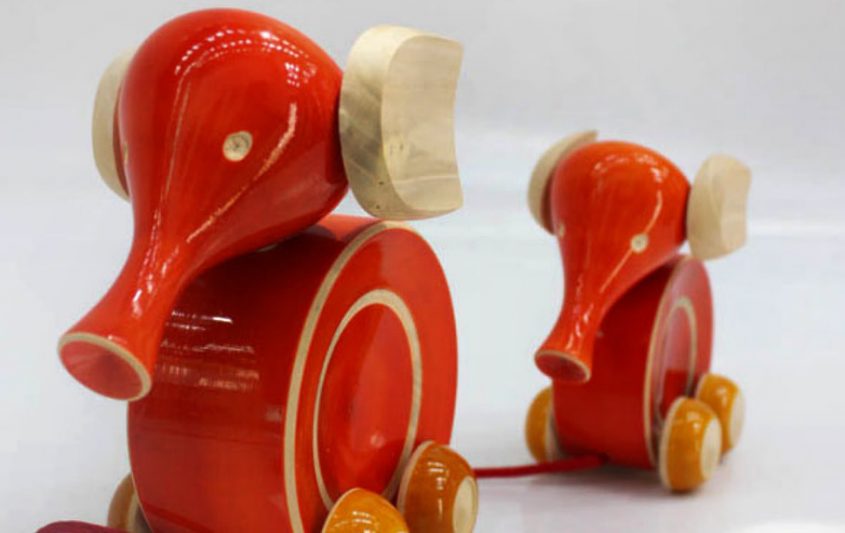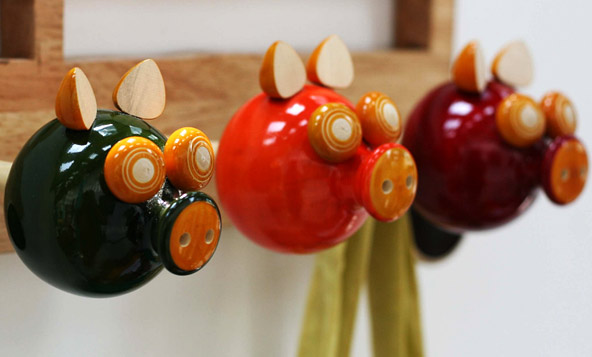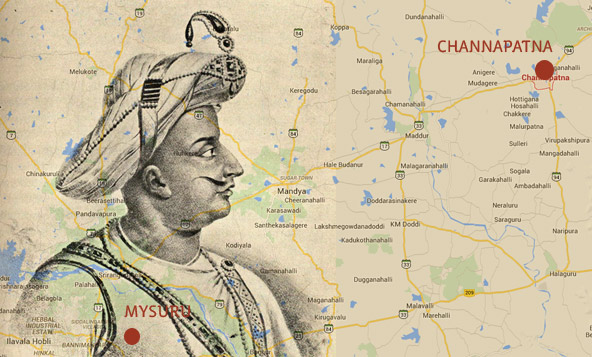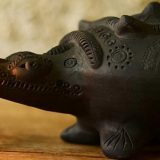Channapatna

The floor is surfaced with sharp wood splinters and sawdust. Unlike other work-sheds, afternoons here are swift & hasty and the noise from turning of wood through overhead belt-drives fills the compound. Symmetrical pieces of wood colored in vibrant shades are stacked on the worktable; by evening, these will be assembled and made into simplistic toys.

As you pass through the row of artisans carefully finishing the wood, with a strong smell of lacquer and wood blocking nostrils, you stop to notice that none of them are wearing footwear and almost everyone’s feet has cuts and wounds inflicted from the wood chips scattered on the floor. “It is not a job, it is worship and the work-shed is temple. Do you wear chappals in temple?” is the reply you get when you ask them about precautionary measure of wearing footwear. Nor does anyone use safety goggles because it is seen as interference in viewing the fine details of wood.

Situated 60 Km southwest of Bangalore, there is a town called Channapatna, in local parlance it is often termed as ‘Gombegala Ooru’ meaning Toy-Town. Some 200 years ago, Tipu Sultan of Mysore had invited Persian artisans to teach the art of toy making to locals. This tradition of toy making initially started with a locally available ‘Aale mara’ (ivory wood). It was turned, machined and finished on traditional lathe. They used vegetable colors and lac to color the toys with simple symmetrical forms.

The craft has attained a Geographical Indication (GI) under the World Trade Organization and caters to global needs; also several other varieties of wood are now taken into account such as teak, rubber wood, red cedar, silver wood and Nepal wood. Since last couple of years, the trade saw a decline with an emergence of cheap Chinese imitations, but as soon as the customers became aware of the toxic chemicals used to make those toys, the handmade Channapatna toys came back in demand.

Here toy workshops still rely on traditional methods; the locally found wood is turned on lathe and colored with organic sources such as turmeric for yellow, indigo for blue, red from vermillion and brown from katha (A paste of Catechu and water). Artisans use a locally available cactus leaf as a file. Each piece is processed with hands & it is made sure that none of the toys have sharp edges. The lacquer finish makes them further smooth, imparts a luster and brightens up the colors further. These special qualities make Channaptna toys ideal for children.

The craftsmen too have moved on from traditional designs to contemporary designs and are open to exploring new collaboration to keep abreast. The town is getting orders from international corporate houses such as Microsoft. Puzzles, space accessories, kitchen utilities are also in great demand. One tenth of the total population of the town is directly associated with Channapatna toy business for their livelihood. The town is also becoming a major tourist destination for people who come in search for these toys.

“Its like bringing up a child when you are an artisan. You get that satisfaction when you see your product transform from the raw wood to the final shape, like them taking the first footsteps, then getting shapes, then making their initial forays into the market, and finally, you have to sell them. It’s like holding their hands through this whole process and then giving them away. It’s more than the money.” – Aruna Ranganathan, 2013, Artisan in Channapatna.
Images By KARTHIK VAIDYANATHAN, Varnam
Buy online ~Shop.gaatha.com











KP Digiteers
Happy to see about channapatna wooden toys in indiatimes.. As a artesian of channapatna.. we are proud.. check fairkraft creations